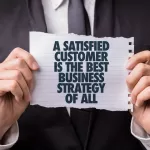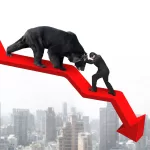Chaos and Control
Has chaos not always been part of our lives? The idea of VUCA (Volatility, Uncertainty, Complexity, and Ambiguity) was voiced in 1991 by Herbert Barber. An ingenious new way to describe what was happening all along.
This period in time is no different. The challenges we now face are not special or even unique. The only way for businesses to succeed is to comprehend what markets need now and pivot the best they can.
Consumer preference, economic shocks, socio-political pressure, and misaligned requirements can heavily influence market outcomes. Sometimes we get in our own way:
- We take our attention off purpose and strategic intent
- We underestimate or overestimate the effect culture has on capabilities
- We discount the lack of ability
- We use working harder as a go to tactic
- We attempt to keep the status quo
It is important to me to understand why things change. Most of the time I see turmoil as a chance for something better. At the very least, an opportunity to influence outcomes. I find it easier to be successful with a wholistic perspective, even with chaos.
The Demand Side and The Supply Side
When leaders are challenged with satisfying current market demands or pursuing new markets they are faced with consumer/buyer preferences, economic headwinds, socio-political issues, or wonky market forces. Not only is the combination difficult to get your head wrapped around, but they also keep changing.
Even after making sense of the demand side of the business, leaders must then gather the right resources, assets, capabilities, and time to create and deliver value.
Successful merchandizers are rewarded with having the right product, at the right time, in the right place, and at the right price. As technology and society advanced, so did market complexity.
The Demand Side of the Market
Until the 1970’s and 1980’s, most time was spent on studying the demand side. Below is a history of progress in understanding consumers:
- Consumer behavior: started before WWI but became common in the 1920’s[1]
- Customer Journey Maps (CJMs): 1985 Chip Bell & Ron Zemke[2]
- Voice of the Customer (VOC): 1993; Abbie Griffin and John R. Hauser[3]
Both CJMs and VOC are great at understanding consumer rationale. Because I do CJMs and VOC together, I will refer to both as CJMs. Initially, the information gathered was quickly put under an internal lens. The analysis consisted of the customer persona and the company doing the research. The supply side was considered transactional with resources being fixed. Both sides were studied fairly independently.
Ecosystems
Fortunately, we can now view and analyze both the demand and supply sides of a market together. In 1993, James Moore introduced the concept of markets as ecosystems[4]. Visualizing and quantifying ecosystems is a powerful way to understand not only your company’s ability to compete but also your competitors.
For more information on ecosystems, read Simone Cicero’s article The Challenge of Mapping Complex Ecosystems in Design and Research. Also, this Deloitte Insights article on business ecosystems further explains the concept: Introduction: Business ecosystems come of age.
The goal of viewing markets as ecosystems is to see all players and influences in one place. The more you can understand all that goes on in a market, the better you can tailor your offering to what is needed. As Helge Tenno puts it “Competitive advantage comes from seeing what nobody else can”.
Overall market performance is helpful for understanding the effects, but the maps can look, well, chaotic.
While markets as ecosystems have been around for twenty years or so, it is not until recently that we have worked out how to connect the map into the underlying market processes. The below model (Diagram 1) shows the real estate housing market from a construction company’s viewpoint:

The construction company leadership can see all known interactions within and effects on the market. The model can also be used to better understand economic shocks or new entrants to the market. This depiction is great for what it is intended, but I prefer more commonly used terms: Permits Issued, Housing Starts, Price/sq ft, etc. For the construction company a CJM can help explain what leads to a net increase in potential buyers.
Supply Side Analysis
From the supply side we can use an Arena Scan developed by Boundaryless (Figure 2 below). I found this to be a great tool for focusing on parts of a complex market map while still maintaining context.

Think of the Focus part of the template as a lens you can hold over the map to visually isolate the parts to study. In our construction company for example, they could focus on the Construction Start Rate to process map the Enabled outcome of New House Supply.
The Jobs To Be Done (JTBD)[6] framework is one method to drill down to the details leading to desired outcomes. JTBD uses standardized process steps to analyze specific activities by supply side agents. In essence it is a process map.
If you have not been introduced to Wardley Maps[7], you will find a great deal of information contained in one place. Boundaryless uses the map to analyze JTBD steps within value chains. Wardley developed it to map activities required to deliver on consumers’ needs (Figure 3 below).

By mapping activities, or process steps, within a value chain and evolution framework, capabilities can be studied in the context of competitive advantages. You can also use it to illustrate strategic scenarios. Below are six “pattern changes” companies can pursue[8]:
- Bring back personalization of experience for users
- Bring producers on top of the Value Chain
- Standardization of Transactions
- Complex Business Process embedded into Software as a Service
- Enable leveraging on Identity, Reputation, and Trust
- Aggregation of Demand (and supply)
Boundaryless has a platform view of digital businesses, but I have found their work to be invaluable for any organization and business model. The combination of viewing an existing or target market as an ecosystem and the ability to focus on areas most important to your purpose or strategy is extremely valuable.
Your Ecosystem
It is important to view your existing or target market objectively. Look at all the players, resources, assets, capabilities, and functions as though you are an outsider. You should include multiple perspectives and keep a wholistic view when creating the map to be able to see connections others do not.
Tariffs
There has been a great deal of content generated about tariffs. Unfortunately, most of it is hypothetical with economists and pundits alike using a great deal of ‘could’s and ‘would’s in their analysis.
What I have discovered is tariffs usually cause price increases in the near term with most mid- to long-term outcomes being positive. Either an agreement on fair trade is achieved, the imposing country develops more robust industries, or products are repositioned within the market by consumers.
There are four reasons for tariffs:
- Source of revenue for the imposing government. Which begs the question, who actually pays the tariff:
- Foreign producers may lower their price
- Domestic importers may absorb all or some of the tariff
- Consumers pay all or some of the price increase. If they do not have an acceptable alternative. Some consider an additional tax.
- Domestic importers may find a national source that somewhat or completely offsets the tariff
- Protection of domestic industries. If domestic industries are counting on renewed tariffs year after year, they run the chance of one day being decimated. Also, foreign producers may establish domestic production, a substitute is developed, or the product becomes obsolete.
- Correct trade imbalances. Difficult to resolve because import and export portfolios are not equivalent in magnitude and composition.
- Negotiation tool. This is the least transparent of the four because few people know all the details of the reasons for the tariffs.
There have been some tariffs that have been continued into not just one but two administrations. Laundry equipment is one such tariff. If we look at what happened, we can see the tariffs were used to give the US industry time to become competitive (2 above).
Laundry Equipment Industry
Consumers paid about $100 for a new washer. It is important to keep in mind that washing machines are an infrequent purchase; every 7 – 10 years. If you bought a washer or dryer between 2018 and 2024, then you ended up paying approximately $14.28 per year more for 7 years. The results are statistically significant but unimpressive in magnitude[9].
Six years after the tariffs were imposed, the US laundry equipment industry was larger, employing more US workers and more profitable. [10] Also, laundry equipment prices rose slower than inflation:
Between 2017 and 2024: Laundry equipment experienced an average inflation rate of 2.29% per year. This rate of change indicates significant inflation. In other words, laundry equipment costing $500 in the year 2017 would cost $585.99 in 2024 for an equivalent purchase. Compared to the overall inflation rate of 3.59% during this same period, inflation for laundry equipment was lower.[11]
The effects of tariffs on an economy are shaped by frequency of purchase, market price sensitivity, alternatives, substitutes, the overall-economy, socio-political pressures, and exporter/importer decision making. (See diagram 1 below).

As you can see from Diagram 1, there are many ways to deal with tariff pressures. Also, tariffs do not have the same effect on every product. Smartphones continued to decline in price, tire prices spiked then dropped within 2 years, and TV prices only spiked during the pandemic.[12]
A few mitigating factors that get left out of analysis are those domestic products that are within the price range of imports. Not to mention agreements are quickly reached in many cases. Another factor is the absorption of tariffs by the exporters and/or importers as was the case in 2018:
About three-quarters of the burden of President Trump’s tariffs imposed on $250 billion worth of Chinese goods will fall on Chinese exporters while U.S. consumers and companies will only see an average 4.5% price increase on the affected goods, according to a new analysis by EconPol Europe.
Why it matters: The paper[EconPol Europe analysis] indicates that Trump’s trade war against China might be working, in that some calibrations indicate the bilateral trade deficit between the U.S. and China may fall by 17% and Trump’s efforts could reduce American imports of certain Chinese goods.[13] – Axios 2018
Jeff Ferry eloquently sums up the laundry equipment tariff case[14]:
- The 2018-2023 washing machine tariffs led to a larger, more competitive U.S.-based residential washer industry, including the creation of over 2,000 new jobs at two Korean-owned companies which opened U.S. manufacturing facilities in the southern U.S.
- Washing machine prices are now below pre-tariff levels, and prices have risen less than consumer inflation, demonstrating that after a six-month flurry, tariffs had little to no effect on washing machine prices.
- The success of the washing machine tariffs shows that “tariff-jumping investment,” i.e. inducing domestic industry growth via tariffs is a viable strategy for the U.S. in industries that have suffered decline.
Things to Consider
Find the Silver Lining
To mitigate the effects of tariffs, start with what you know about your customers. How frequently do they buy your product, what can you do that would increase value, is there a substitute or alternative you can take part in providing them.
There are multiple ways to increase the value of what your customers are buying. Think of how you can manage the relationship Value = Qualities/Price + Time.
The International Trade Administration website has up to date information on tariffs.
Start With What You Do Well
The best place to start is with your best practices. Understanding the combination of capabilities, assets, and resources that continually deliver value helps develop an immediate response. Understanding the gaps in your current state and where you need to be at the same time next year, helps develop a strategy. It is worth taking the time to figure out the new combination of value creation ingredients needed to compete.
What Boundaryless and Wardley have recognized in product innovation and market evolution is very similar to the evolution and innovation of capabilities within an organization. Capabilities unique to your organization are not hirable and are fragmented or isolated to a few individuals.
They mostly exist as tacit knowledge or heuristics that is difficult to train others on. Both David Teece and Roger Martin write about standardizing best practices in order to advance an organization. Teece on the relationship between dynamic and substantive capabilities and Martin on driving heuristics to algorithms. Comparing these insights to Wardley’s market evolution we see how company capabilities evolve (See Figure 3).
Something to keep in mind is that as best practices become formalized, they lose some of their uniqueness. To appeal to larger audiences, capabilities need to conform to the fit, form, and function of the culture. Something similar happens when decentralizing functions or expertise.

Knowledge is productized in a way for quick, easy dissemination. As each group embraces the new skills, the evolution to custom built begins.
New best practices are identified and the cycle of Genesis to Commodity continues. Each cycle, new capabilities become more effective. As does their visibility. For example, we currently rely on subject matter experts to use AI to perform complex tasks. Eventually, AI will evolve into a co-agent that works seamlessly alongside every employee.
Innovation and knowledge are your best assets. Leveraging your unique way of creating value and enriching customer relationships is how you start. For those who are negatively impacted by tariffs, know that this too shall pass. For those who are benefiting from them, use the opportunity as a genesis for a better set of unique capabilities.
[1] https://thereader.mitpress.mit.edu/a-brief-history-of-consumer-culture/
[2] https://cxmtoday.com/cx/the-origin-of-customer-journey-mapping/
[3] ‘The Voice of the Customer’, Abbie Griffin & John R. Hauser, Marketing Science (1986-1998); Winter 1993; 12, 1; ABI/INFORM Global
[4] ‘’Predators and Prey: A New Ecology of Competition, James Moore, HBR, May-June 1993, 71(3):75-86
[5] ‘Modeling and Simulation of the Endogenous Dynamics of Housing Market Cycles’, https://www.jasss.org/17/1/19.html, Journal of Artificial Societies and Social Simulation 17 (1) 19
[7] https://miro.com/blog/wardley-maps-whiteboard-canvas/
[8] ‘The Platform Opportunity Exploration Guide’, Boundaryless, September 2022, v1.1
[11] https://www.in2013dollars.com/Laundry-equipment/price-inflation/2017-to-2024?amount=500
[12] https://www.reuters.com/graphics/USA-TRUMP/TARIFFS-GRAPHIC/klvymmdrwvg/
[13] https://www.axios.com/2018/11/24/trump-trade-war-china-tariffs-economy







